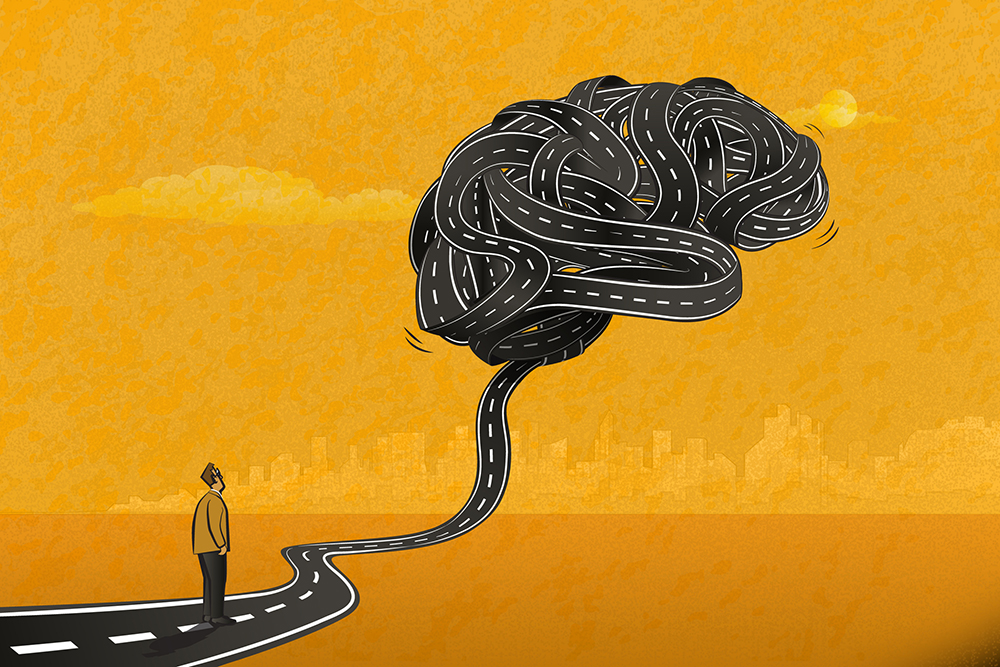November is Alzheimer’s Awareness Month: 11 Important Facts and Statistics

Alzheimer’s disease is the most common form of dementia diagnosed in older adults in the United States, affecting one in three seniors and causing 60% to 80% of dementia cases.
You probably have many questions if you or your loved one has been diagnosed with Alzheimer’s. Here are some important facts that will help you understand the disease better.
- 1. Six million Americans are living with Alzheimer’s
According to the Alzheimer’s Association, six million Americans live with Alzheimer’s. Experts expect the number to rise to 13 million by 2050.
- 2. Certain groups of people are at a higher risk of developing Alzheimer’s
Black Americans, Hispanics/Latinos, and women have a higher chance of developing Alzheimer’s.
However, many older adults in these groups don’t get diagnosed early. People who receive timely diagnoses have more treatment options to delay symptoms, and the cost of care is lower.
- 3. Not everyone diagnosed with dementia has Alzheimer’s
It’s common for people to lump all forms of dementia under one category, but Alzheimer’s is only one type of dementia.
What sets the disease apart from other forms of dementia is the accumulation of beta-amyloid and phosphorylated tau, abnormal proteins found in the brain. The brains of people with Alzheimer’s also experience the degeneration of nerve cells.
- 4. Alzheimer’s patients exhibit a variety of symptoms
The earliest symptom of Alzheimer’s, which can occur as early as 20 years before the disease’s final stages, includes trouble remembering names, events, and recent conversations. As the disease progresses, people experience confusion, poor communication, and a lack of judgment.
During the final stages, the person will have trouble walking, speaking, and swallowing.
- 5. There are five stages of Alzheimer’s disease
Medical professionals and scientists have determined there are five stages of Alzheimer’s disease: preclinical, mild cognitive impairment, mild dementia, moderate dementia, and severe dementia. The preclinical stage can last for years, and the final stage lasts, on average, one to two years.
If you or a loved one is struggling with cognitive issues and suspect they may be Alzheimer’s-related, it’s essential to speak with your physician sooner than later. People diagnosed with Alzheimer’s can live meaningful lives for years following a diagnosis. Early intervention is the best way to set realistic expectations and plan with families for the future.
- 6. The rate of Alzheimer’s progression varies
A person’s average survival rate after being diagnosed with Alzheimer’s is three to 11 years. The main factor influencing life expectancy is the degree of impairment at the time of diagnosis. Some individuals survive 20 years or more with the disease.
- 7. Age is not a direct cause of Alzheimer’s
Although most people diagnosed with Alzheimer’s are older adults 65 and older, age isn’t a direct cause of Alzheimer’s. Other risk factors contributing to an Alzheimer’s diagnosis include family history, genetics (not the same as family history), head injuries, and heart disease.
Older adults can mitigate some risk factors by eating a healthy diet, getting plenty of exercise, staying socially active, and avoiding smoking and excessive alcohol consumption.
- 8. Symptoms can be delayed with early treatment
It’s true that Alzheimer’s has no cure. People diagnosed with this disease will eventually succumb to it. However, with early intervention, it’s possible to delay the onset of late-stage dementia.
- 9. Early diagnosis eases anxiety
The sooner people receive an Alzheimer’s diagnosis, the better. An early diagnosis can put the patient and their family members at ease, giving them answers to why they are feeling the way they’re feeling.
An early diagnosis also helps families plan how to care for their loved ones as the disease progresses. Making plans and understanding what’s happening inside one’s body eases anxiety and reduces stress. Stress affects how fast the disease progresses; less stress is always better for Alzheimer’s patients.
- 10. Caregivers provide billions of hours of care annually
If you have a loved one diagnosed with Alzheimer’s, caring for them can be a full-time job. The Alzheimer’s Association estimates that caregivers, in 2021, provided more than 16 billion hours of unpaid care. The Association estimated that the care costs for these hours translated into $272 billion.
- 11. Alzheimer’s is a costly disease
Caring for Alzheimer’s patients is expensive. Alzheimer’s patients have increased medical costs, and their nursing and end-of-life care are costly too. According to the Alzheimer’s Association, “in 2022, Alzheimer’s and other dementias will cost the nation $321 billion. By 2050, these costs could reach nearly $1 trillion.”
Springpoint’s exclusive memory care program is designed to enhance the physical, cognitive, and social well-being of every memory care resident. Trained team members working in our memory care neighborhoods employ the most comprehensive, leading-edge care methods to engage residents with Alzheimer’s disease or other forms of dementia. Contact us to find out more.



